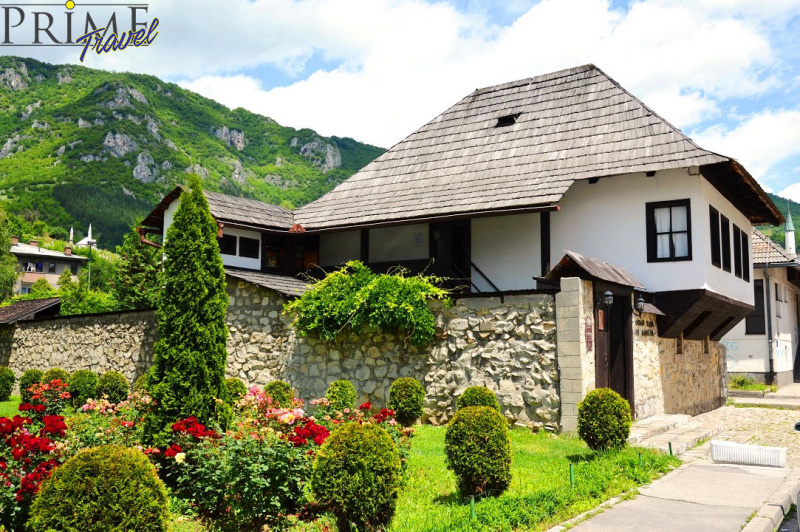
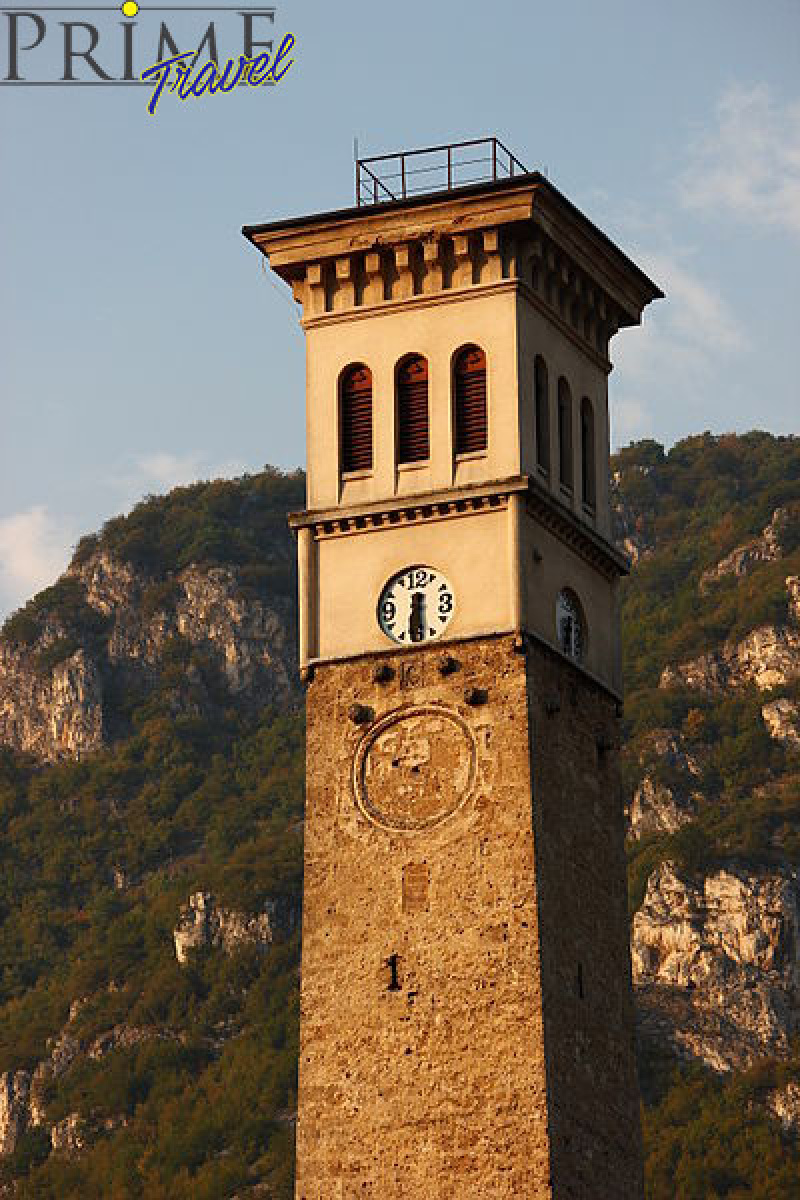
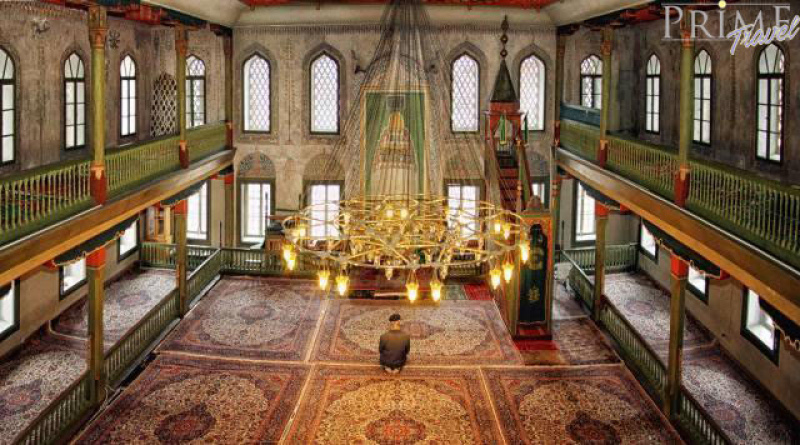
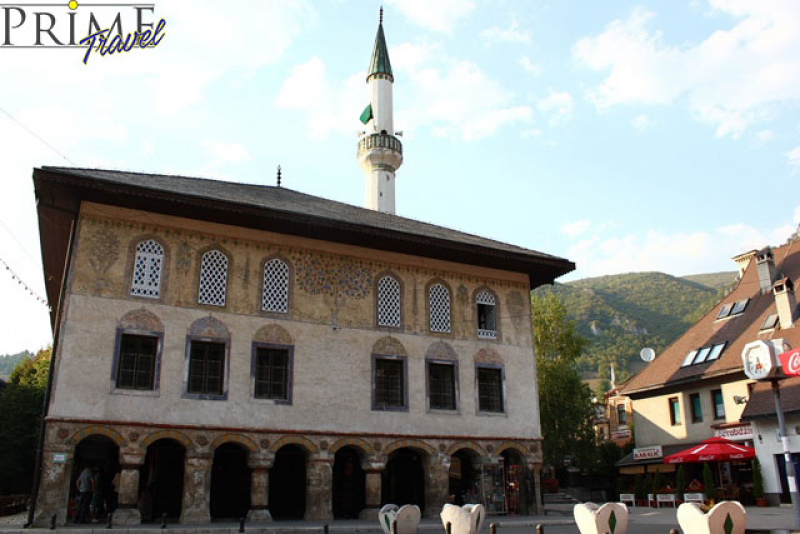
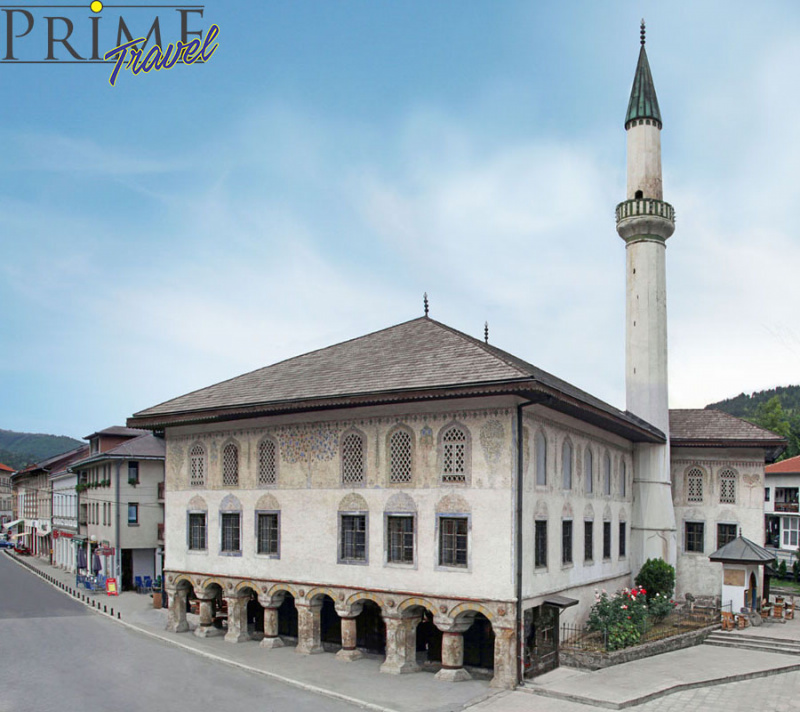
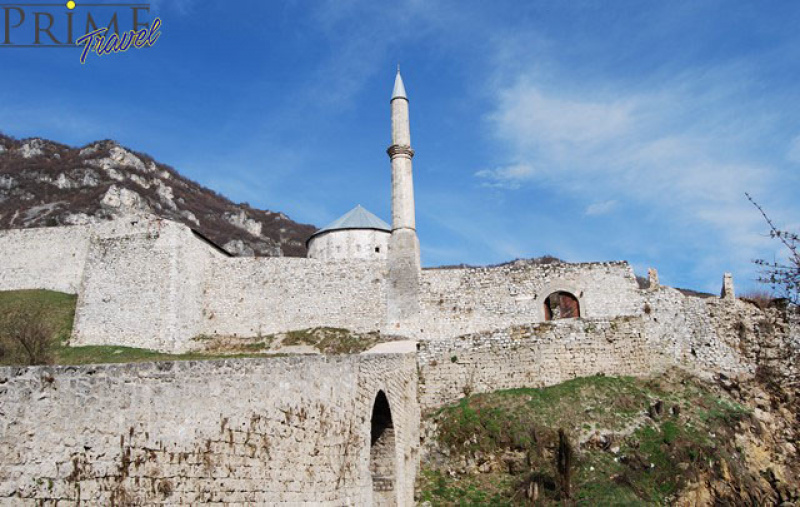
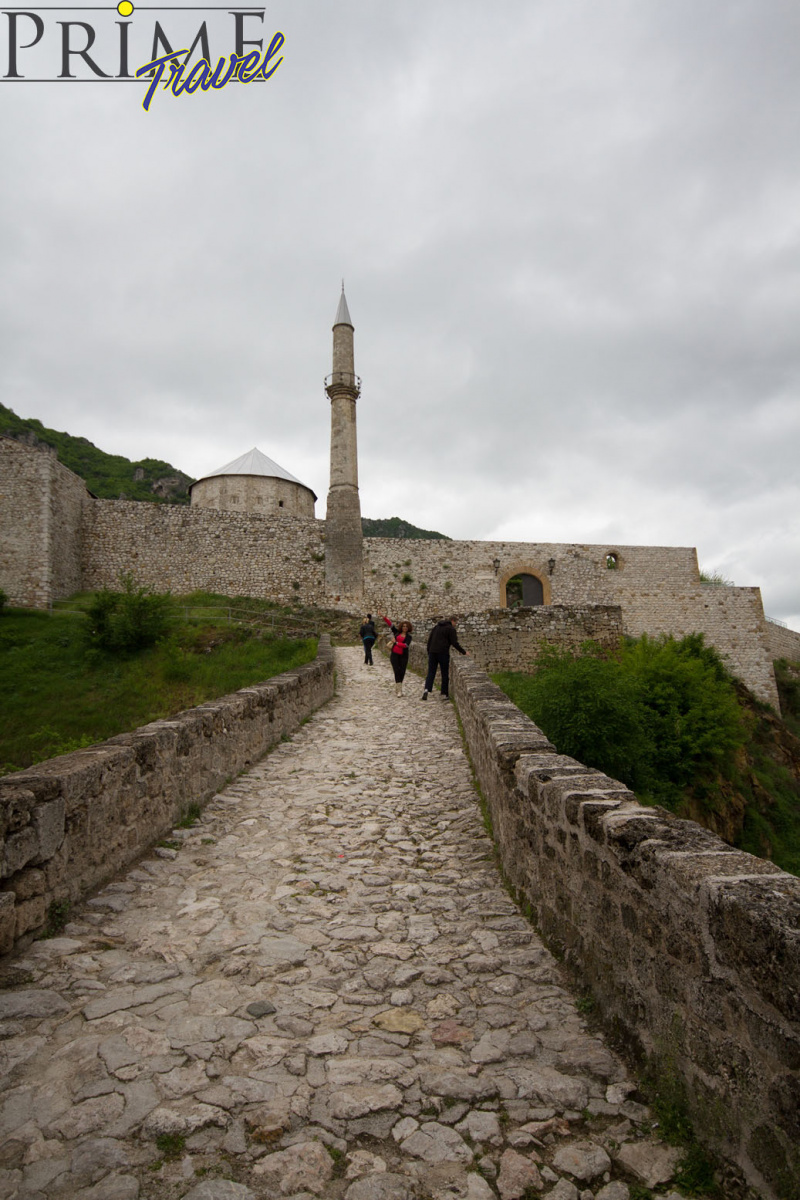
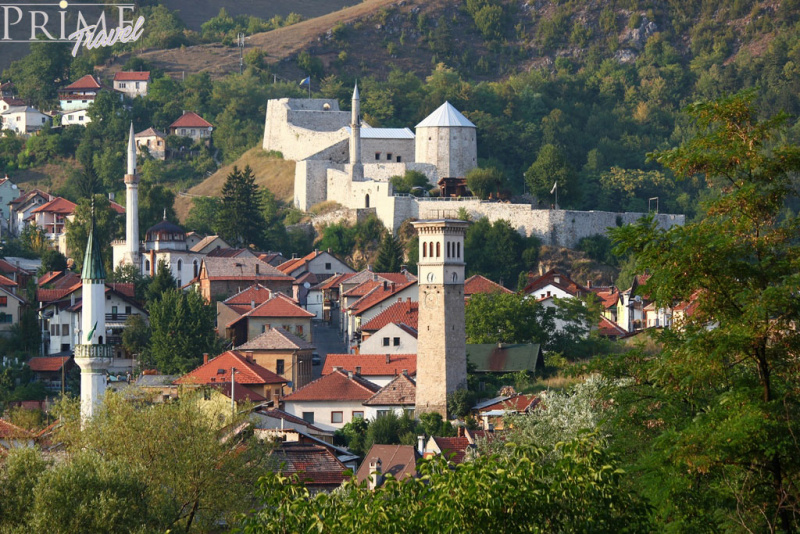
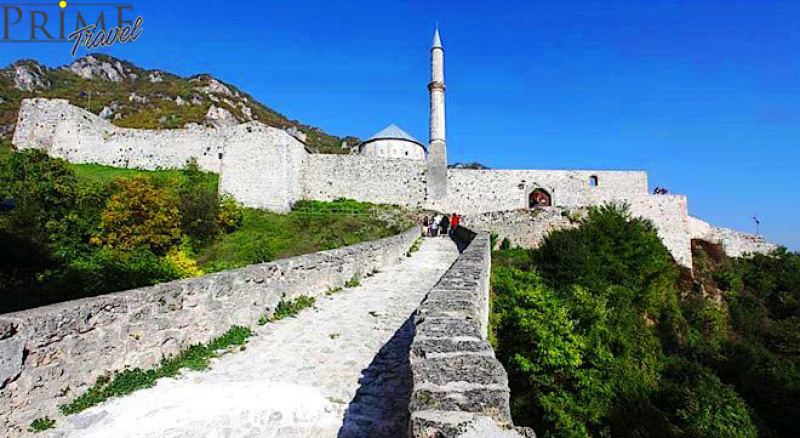
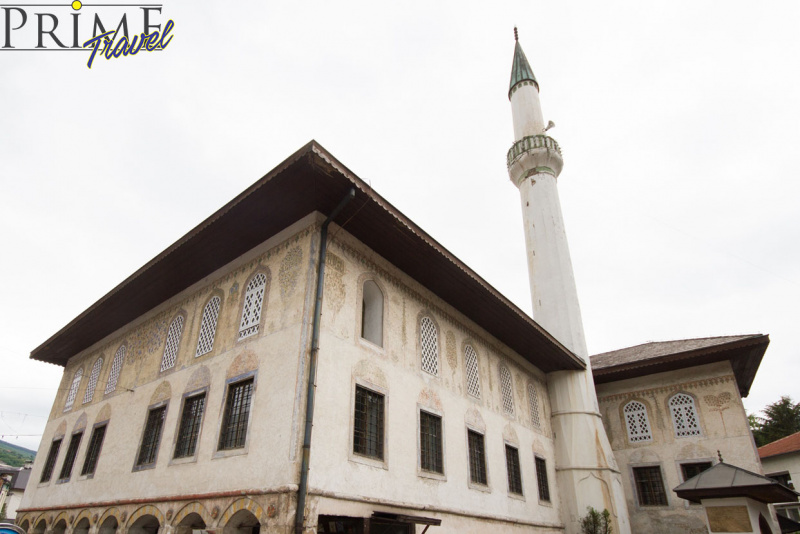
Price: Contact us
How Travnik got the name is still not interpreted, but you can immediately assume that it comes from the pastures and from the root word. There are assumptions that the name came after the fort that was created before the Ottoman occupation, and where the officer was located who collects diverse grass, based on his name "Travnik" the city got its name.
The town of Travnik was first mentioned in 1463 in connection with the events that led to the fall of the Bosnian Kingdom. First it was mentioned by Dursun Bey who followed Sultan Mehmed II in his campaign against Bosnia. He literally says: "The next Sultan Mehmed II to Jajce stopped in Travnik." According to the legend, the place where the sultan stopped to pray today it is the place of the "Colorful Mosque" or "Sulejmanija".
Sights you can visit in Travnik:
Colorful mosque
Colorful mosque or Süleymaniye mosque is located in Travnik, in the area called Lower bazaar, and is assumed to be built in the second half of the 16th century. In terms of the endowment of the first reformers of the mosque is the fact that it was built by Gazi-aga. 1757 the Vizier Camil Ahmed-aga raised the mosque, which was called Ćamalija by the residents. It was gutted by fire in 1815 years, and in its place was built a new mosque by Bosnian vizier Suleiman Pasha Skopljak.
It is named for its unusual colorful painted decorations on the interior and exterior walls. In the ground floor of the mosque is a bezistan. Sulejmani is a unique example in the Ottoman architecture where the same building was used for religious and secular purposes.
The minaret is located to the left instead to the right side of the mosque as the rule of Islamic places requires. Such a move may be justified according to the wet and unstable ground for the construction of the west, or right side. It is assumed that the minaret is older than the mosque and that it comes from a previous Ćamilija.
Disastrous fire that happened in 1903 has inexplicably bypassed the Sulejmani. The building has suffered several damages during World War II ,the restoration began on the 80s of the last century. Based on the restoration she has regained its former appearance with the inevitable floral designs.
Old Town
Old Fort is one of the most beautiful and best preserved fortifications of medieval Bosnia in which the subsequent historical periods left their distinctive characteristics. In so far known historiography sources, there is no record of the year and the duration of the construction, as well as the name of the builder. Historians agree that the fortress was built in the second half of the 14th or first half of the 15th century. After the way of construction and other indications, it is assumed that the king Tvrtko II Kotromanić could be the builder, but there is a possibility that the potential builder could also be king Stjepan Dabiša.
Today's appearance of the walls and the fortress itself is the result of intervention by Turkish masters construction of military fortifications. In 1953, the fortress is placed under the patronage of the Regional Museum of Travnik. Thanks mostly to the Director of the Museum Stipe Lozić began the cleaning and landscaping of the fort, archaeological and conservation works. Soon the old city became a center of cultural and artistic events in Travnik, which attracts tourists and visitors. In 1999 started a process of renewal and revitalization of the fortress.
Old Fort has today the status of national monuments.
The mythical founding:
Travnik fortress in more than 500 years of existence has changed its name several times:
Garbun, forgotten medieval name whose meaning we do not know as it may have originated from the extinct language of Illyrians, or maybe it's a Turkish word that means fortress on the hill.
Travnik (Trawnic, Travnich, Travnic), after a Bosnian royal grass tax (tax on livestock grazing), as the city Mostar was named after bridge tax on toll.
Austro-Hungarian Monarchy names the fort Castle, and is so marked in their military maps.
The nation called it simply City, after 1953 on the initiative of Stipe Lozić, director of the Regional Museum of Travnik, for the purpose of placing the fort as a tourist destination, it was called Old Town. The fort is today known by this name – Old Town!
Sundial
When the Sundial was set in Travnik, , the whole bazaar used it as a public instrument. According to sundial wealthy Travnik citizens adjusted their watches, the mechanical clocks that were mounted in the two Travnik Clock Towers were also adjusted according to the sundial.
Travnik is the only town in Bosnia that can boast to this day to have a sundial, while in Sarajevo, in the framework of instruments Gaza Husrefbey muvekithana, there is a wrist watch that kind.
The most interesting Travnik sundial is located in a recess on the southwest wall of the Hajji Ali-beg mosque and astronomical method shows that measurement is based on measuring the elevation of the sun relative to the horizon, or the length of a shadow parallel to the axis of rotation of the Earth or perpendicular to that axis.
It is not known when and by whom it was built. However, there are stories that it was set by watches lovers in 1886.
Vlasic
Vlasic is a mountain in central Bosnia, Bosnia and Herzegovina. It is mostly located in Central Bosnia Canton and part of the Republic of Serbian. On it is Paljenik - the highest mountain (1,933 m) in the respective field.
Due to this position, the majority of the surface Vlasic is in several municipalities of Travnik, Kotor Varos, Skender Vakuf, Dobretići, Vitez and Zenica. It stretches south-east - north-west, between the lines Zenica-Travnik (southeast) and Kotor Varos - Skender Vakuf (northwest).
There are various legends about the origin of the name Vlasic. However, at the Vlasic still live the version according to which the sun and the moon mother sent seven brothers to bring happiness and beauty of the distant world. Six happily returned, but the seventh is forever lost. Eventually, the moon finds the lost brother on the beautiful mountain in which he transformed.
According to the second version, six brothers have courted the same beautiful woman, but sorely quarreled. They asked the moon and sun mother to make the judgment. She decided that the woman should be their sister and her seventh child. Legend says that then the seven constellation Pleiades were formed, which (on a clear night, from spring to autumn) you can crystal see from the Vlasic mountain.
The local population also transmit for centuries an acceptable belief that the mountain was named after the shepherd nomads Vlachs (as they are called in Bosnia). They lived and reared their flocks there from the fall of the Roman Empire and the stayed there by the end of the 19th century.
House of Ivo Andric
Nobel Prize winner Ivo Andric was born on 10/09/1892. in Travnik, Zenjak. As an annex to the Regional Museum of Travnik 08.30.1974. they opened the reconstructed birthplace of Memorial Museum of the literary Nobel Prize winner Ivo Andric with a permanent exhibition on his life and literary work.
13. 3. 1975 the day of the death of Ivo Andric, Museum of Travnik proposed the Municipal Assembly of Travnik as a founder to the Memorial Museum to rename it to Memorial Museum of the birth house of Ivo Andric. Under this name it is still active today.
The permanent exhibition presents the life and literature of Ivo Andric, and consists : Birth room, rooms dedicated to the novel "Travnik Chronicle", photo archive with photos from the award of the Nobel Prize, the Library with the art collection.
Memorial Museum continuously collects materials and exhibits that may be relevant to the life and literature of Ivo Andric. Every year they organize literary and cultural programs so that the public could remind themselves to the most important dates and events in Andric's life and literary career.